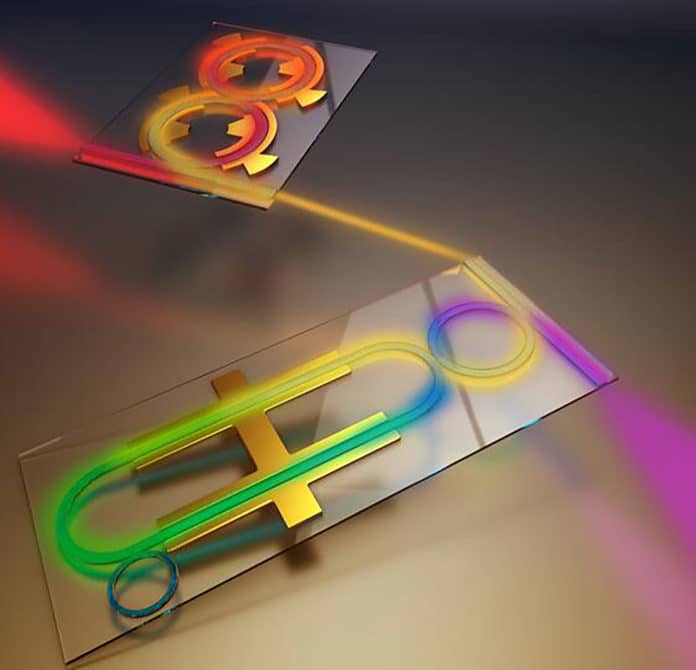Photon’s color is also known as a photon’s frequency. Changing a photon’s color is difficult to change, as changing its frequency would also change its energy.
Existing frequency shifters are either limited to low efficiencies or frequencies or are bulky. Furthermore, most approaches are not bi-directional, which renders them unsuitable for frequency beam splitters.
Efficient frequency shifting and beam splitting are essential for a wide range of applications. Now, scientists from the Harvard John A. Paulson School of Engineering and Applied Sciences (SEAS) have developed highly efficient, on-chip frequency shifters that can convert light in the gigahertz frequency range. The frequency shifters are easily controlled, using continuous and single-tone microwaves.
Marko Lončar, the Tiantai Lin Professor of Electrical Engineering and senior author of the paper, said, “Our frequency shifters could become a fundamental building block for high-speed, large-scale classical communication systems as well as emerging photonic quantum computers.”
Scientists have developed two types of on-chip frequency shifters using the lithium niobate platform: one that can covert one color to another, using a shift of a few dozen gigahertz, and another that can cascade multiple shifts, a shift of more than 100 gigahertz.
Lithium niobate can convert electronic signals into an optical signals. Previously, it was found to be challenging to work with on a small scale. In this study, scientists come up with a technique to fabricate high-performance lithium niobate microstructures. They used standard plasma etching to sculpt microresonators in thin lithium niobate films.
Using the same technique, scientists etched coupled ring-resonators and waveguides on thin-film lithium niobate. In the first device, two coupled resonators form a figure eight-like structure. Input light travels from the waveguide through the resonators in a figure-eight pattern, entering as one color and emerging.
This device provides frequency shifts as high as 28 gigahertz with about 90% efficiency. It can also be reconfigured as tunable frequency-domain beam splitters, where a beam of one frequency gets split into two beams of another frequency.
The second device uses three coupled resonators: a small ring resonator, a long oval resonator called a racetrack resonator and a rectangular-shaped resonator. As light speeds around the racetrack resonator, it cascades into higher and higher frequencies, resulting in a shift as high as 120 gigahertz.
Yaowen Hu, a research assistant at SEAS and the first author of the paper, said, “We can achieve this magnitude of frequency shift using only a single, 30-gigahertz microwave signal. This is a completely new type of photonic device. Previous attempts to shift frequencies by amounts larger than 100 gigahertz have been very hard and expensive, requiring an equally large microwave signal.”
Lončar said, “This work is made possible by all of our previous developments in integrated lithium niobate photonics. The ability to process information in the frequency domain in an efficient, compact, and scalable fashion has the potential to significantly reduce the expense and resource requirements for large-scale photonic circuits, including quantum computing, telecommunications, radar, optical signal processing, and spectroscopy.”
Journal Reference:
- Hu, Y., Yu, M., Zhu, D. et al. On-chip electro-optic frequency shifters and beam splitters. Nature 599, 587–593 (2021). DOI: 10.1038/s41586-021-03999-x
